
Do you want to feel fulfilled? Do you want to “Be the change you wish to see in the world?” The common theme in those sentences is “you”. But it shouldn’t be about you, it should be about the people you’re there to help.
You need to ask yourself are your intentions in the right place? Are you going overseas to help, or are you going overseas to look good to others? Do you want to help people, or do you just want to post a picture of yourself helping others for Facebook? Do you want to offer your skills to a community, or do you want to bulk up your résumé?

Be wary of having a “savior complex” when you participate in voluntourism. This is the idea that you, as a single foreigner, can save a whole community. This sort of thought process is condescending because it implies that you’re a hero while those locals are helpless. As admirably altruistic as it sounds, the problem with voluntourism is its singular focus on the volunteer’s quest for experience, as opposed to the recipient community’s actual needs. If you truly want this experience — to change your world perspective, etc. — then at least call it like it is and admit you’re going on a self-fulfillment trip. Don’t call it humanitarian work when the only human benefiting from this experience is you.

I had this realization a few years ago when I went to Senegal for the first time to help photograph and volunteer with the Women’s Global Education Project. The WGEP received a $2 million USAID grant for 4 years to improve literacy training and also to work with school children to improve reading skills. This program could reach over 8,000 children across Senegal and provide life and job skills as well as ways to give back and mentor younger children, and eventually have job opportunities within and outside of the program for these girls. It has been a labor of love for 10 years to get this grant and the funds to build an educational and technology center for these children with access to the internet , computers, and basic school supplies and after school programs we all take for granted…
Success right? Money raised, problems solved, but little did we know that this was just the beginning.

The real work started as soon as we were on the ground and in the trenches of Senegal. My job was to film the behind the scenes of Women’s Global Education Project and the people who are donating their time and money to make this project a reality.
I decided to volunteer my photojournalism services to this great cause, because I believe strongly in women's empowerment and education. I have spent a lot of time mentoring young women here in Los Angeles through the Step Up Women's Network, Spark, and Solutions in San Diego and when I heard about this project in Senegal I really wanted to be a part of it.

When I first arrived I knew that I would have intense culture shock and be exposed to one of the poorest countries in the world. What I saw was shocking and overwhelming. The living conditions in most of the country is extreme poverty and people are still living in mud huts with no access to running or clean water or electricity. I thought that I was going to be covering a story on the success of this project and how 8,000 girls were going to be embarking on their new lives by going to school and learning how to survive in the workplace. What I actually encountered was far different.
Senegal is mostly Muslim and although they are not a conservative Muslim country, they still do not prize women's education and feel that they are best suited at home doing the cleaning, cooking and child-rearing. They really only put emphasis on boy's education. Even though we were bringing them schools, a program to enroll their girls in and free money to send them to school, we found that getting girls ENROLLED in the program was our greatest struggle. Who knew? In America we think we can just throw money at a problem and it gets solved, but this problem is deep rooted socially in this country and in many parts of the world and change needs to happen on THEIR terms.
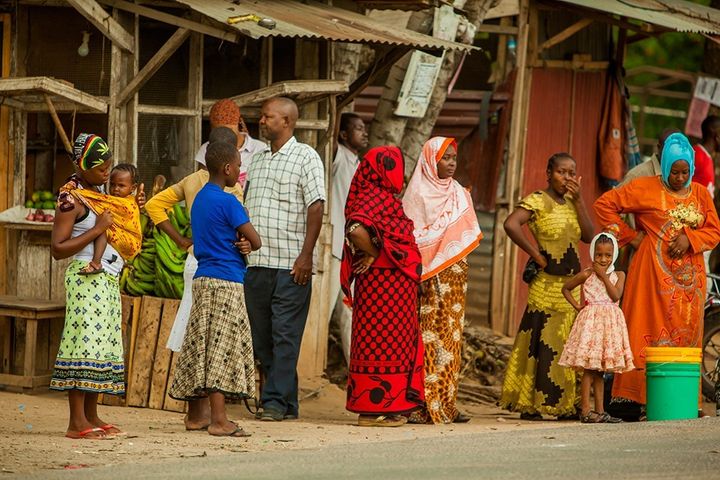
This was a huge lesson on “voluntourism” and the pros and cons of it for me. I left Senegal feeling that we created more work than solved problems and I was a bit disheartened, because although it was a great idea to help educate girls, what is there for them to aspire to once they have graduated? Are there jobs? Is this program sustainable? What happens once we leave?
People on such short trips usually don’t stick around long enough to realize how ineffective they are being. In Senegal, the girls were used to seeing groups of young people come for week-long visits. They would play with the kids, give them a bracelet or something, and then leave all-smiles, thinking they just saved Africa. The voluntourists left thinking they gave the kids something they didn’t have before, but the kids didn’t care, because what they really wanted was school uniforms, their school fees to be paid, guaranteed meals, access to healthcare, and love. — the basics.

I recognize there are some short-term trips that do produce value, but if you went on a voluntourist trip and had to question if you really “made a difference” or not, the answer is probably not. Good intentions are not good enough. Temporary measures do not solve the chronic and multifaceted societal problems many developing nations face.
Worse, they can even be harmful to children who struggle with abandonment issues. This should not be understated; have you ever considered the negative impact it routinely has on kids after they bond with someone for a week, and then that person disappears from their life? If your justification for going on these trips is “seeing the smiles on the kids’ faces”, then you’re part of the problem. If you must go on one of these short-term trips, then leave behind more than you take away.

Ask yourself, “Are you going to be doing more harm than good?”
“Voluntourism” is a growing industry, with more than 1.6 million volunteers spending approximately $2 billion a year. These volunteer tourists are most commonly women and young adults between 20 and 30 years old. And I was part of this industry.
Recently, I was at the NY Times Travel Show and I was listening to a speaker talking about the 2017 travel trends. “Voluntourism” and “Experiential travel” became the travel trend of the past. Rather than just visiting far-flung locations, volunteering, and having a life-altering experience, vacationers are now looking for ways to tap into native cultures, have meaningful interactions with locals, and feel like they are helping local communities and giving back. In a world heavily disconnected by technology, we humans are trying to find better ways to connect and find authenticity.
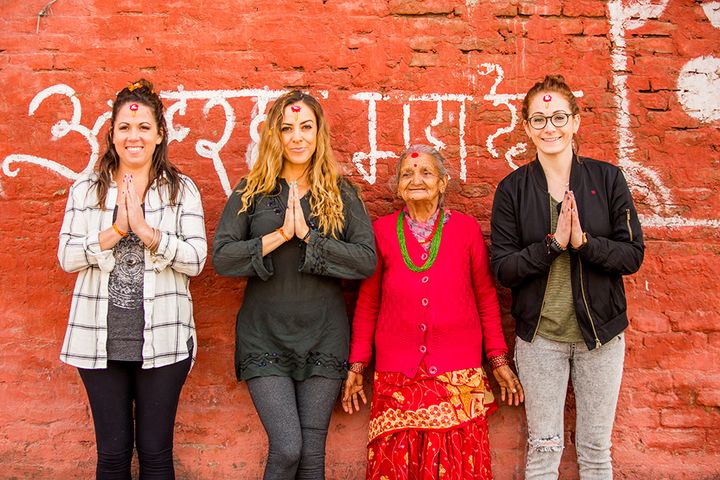
Industry leaders have now coined the phrase “transformational travel” as the next evolution for 2017. It is similar to experiential travel, but taken a step further. Transformational travel is travel motivated, but defined by a shift in perspective, self-reflection and development, and a deeper communion with nature and culture. Today’s culture is device- and pace-driven. We are disconnecting from ourselves, our relationships, nature, and culture. As an adventure travel writer and photographer, I have been drawn to travel photojournalism for the exact same reasons. Pushing your own boundaries and getting out of your comfort zone through adventure travel can lead to deeper transformations.
But transformational travel is not just a selfish way of traveling. Experts are saying that by the act of just traveling, we can shape communities, perspectives, help local families and economies, and turn our wanderlust into something more sustainable.
How you ask?

Simple, JUST GET OUT THERE AND TRAVEL! That may sound confusing, at first, but the travel industry is booming, second only to Oil in the world! In 2015, 1 billion people were tourists and travelers in the world. By 2020, that number is estimated to double at 2 billion! Travel is becoming cheaper, easier, and more accessible. With apps like Air bnb and technology, people can now rent out their services and houses, turn their skillsets into fun activities for tourists and become instant entreprenuers whether they are educated or not. The world is changing rapidly and our tourists dollars have the ability to do more good for local economies than was ever possible before.
So what can we do?

Just to clarify, Voluntourism isn’t all bad, it’s just flawed. It’s flawed because most people only have a week to 10 days paid vacation and that just isn’t enough time to really make a difference in the ways that really matter and also when people make donations, often they don’t know where their donations actually end up. I was a bit traumatized from my last trip to Senegal, yet very passionate and determined to continue to help women’s education around the world, a cause near and dear to my heart. So when the opportunity arose again to help out with the Unatti Foundation and School for Girls in Nepal, I decided to go about things differently this time.

Stephanie Waisler founded the Unatti Orphanage and School for girls 17 years ago before Voluntourism even was a word. From scratch she has helped these young girls find safety, education, love and community, and hope in a country torn by devastating earthquakes, poverty, and unfortunately sex slavery. The issue that is arising now is what is next for these girls? 17 years later, some of them are starting to graduate, but they have no where to go after school in a society where women are not given career paths to follow, but are expected to live at home, get married and raise a family.
Stephanie is a professional photographer as well and we both were having coffee in Venice Beach one day trying to brainstorm on how we could use our photography for good and real change with the orphans. Could we create a sustainable program that could show the girls that they could learn a skill or craft, or have the confidence to pursue a professional job after school?

This time when I asked myself, “Would you volunteer abroad if you had no cameras with you?” the answer was NO.
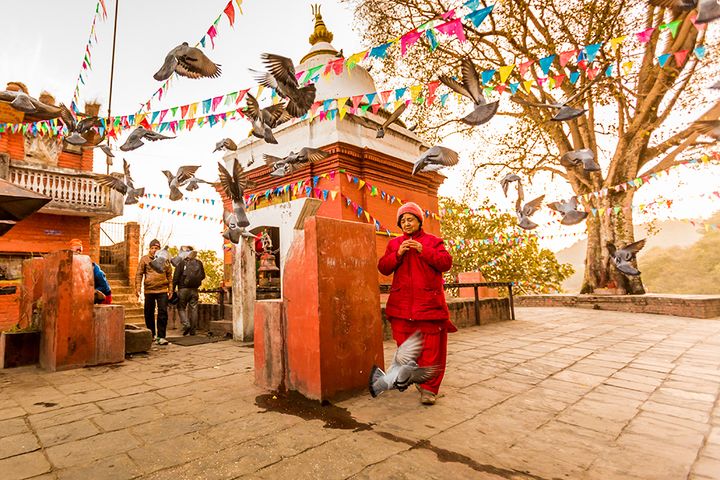
Not only am I bringing my camera, but I am going to bring 14 other people with cameras and include the girls in a photography workshop and a gallery show to raise money for the orphanage. This time around, I wanted to show the girls that they can have a real- life skill that is not just fun, but is lucrative and can teach them life skills and people skills that are necessary to succeed out in the business world.
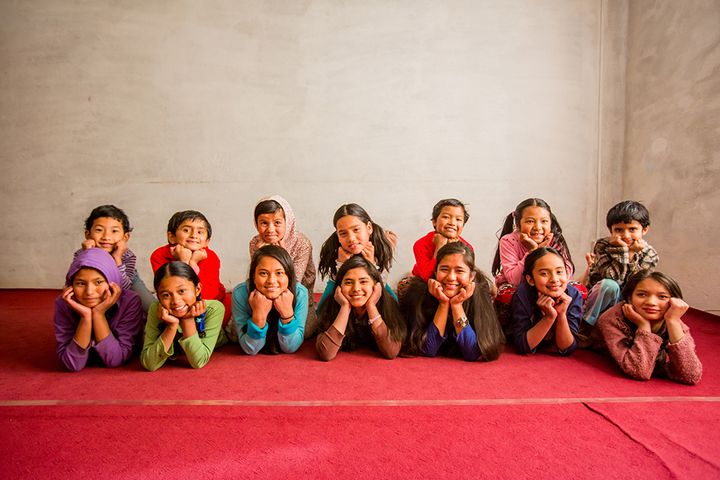
It is not enough to just throw money at a problem, but you have to be prepared to offer a sustainable solution and be willing to get out there in the world personally to create that solution. So in addition to building into my photography workshop fee that each participant sponsored one girl’s education and housing for a year, we would be donating our time, love, and photography skills to help teach these girls that they can have the confidence and skills to support themselves someday.

Just taking the time to fly across the world and spend quality time with these girls was a huge gift for all of us, but the best part was seeing how emotional they were when we had the gallery show of all of our work at the end of the trip. It is something completely different to take a photo and then to see it larger than life hanging in a gallery even for me as a photographer. The girls admitted they were scared at first of “letting us down” in the photography workshop and then were so honored to see their work or photos of them hanging on the walls. What they needed more than money was someone to tell them and show them that they can do it and to believe in them.

Although volunteering is a bit of a selfish act at times. It DOES make me feel good to give back, but I want so much more for these girls. I want them to have adults in their life that mentor them throughout the years. I want them to have career options and confidence to talk to men and women as their peers. I want them to have non-profits that can help them locate more stable jobs. I want them to find someone that inspires them to learn and to follow their dreams. And I want them to have role models within their own countries not just westerners. These girls are pioneers in their communities where they have no educated female role models to aspire to. We may be it, but we are hoping that they become that for the next generation of orphans and that the cycle of philanthropy continues, because that is the true transformation that can happen with transformational travel trips.


Yes, my workshop wasn’t all about volunteering with the Unatti Girls. In true “Laura The Explorer-Style” I planned an epic 10 day adventure across Nepal where we visited an elephant sanctuary, hiked up to temples, landed on Mount Everest in a helicopter, went paragliding in Pokhara and even sponsored the oldest Unatti girl to come join us, played in the Holi festival with the girls, and had the Nepalese adventure trip of a lifetime, but the entire thread of the trip was “transformational”. I was determined to not only have our entire group come back transformed from this beautiful land and culture, but to leave these girls transformed, with help for their food and education, the ability to skype or email with us anytime, and most importantly with the knowledge that there is more out there for them and it is possible to achieve. Just by the act of traveling we can all make a difference in our world and help others.
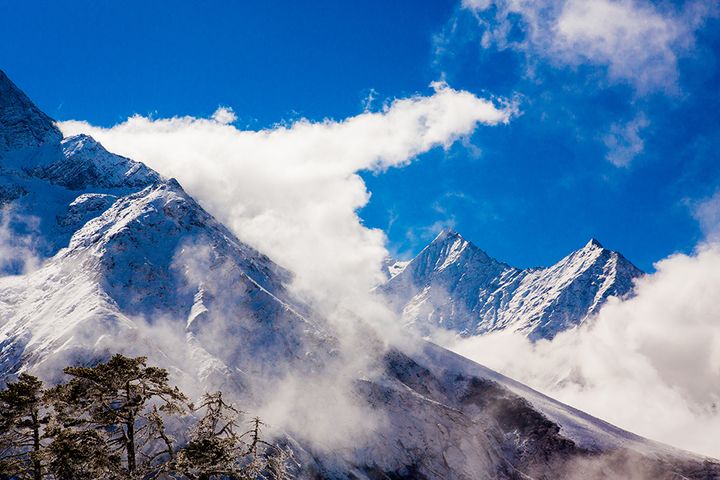
I remember sitting taking notes at the NY Times Travel show and writing down “transformational” and the definition and whispering to the journalist next to me, “I’m so glad that this is the travel trend now in 2017. That coming back transformed and transforming others is trending now”. And she looked at me and said, “This has always been the definition of travel. It just got lost along the way and people needed to be reminded again about what it was all about”.
Amen sister!
To see more photos from Nepal you can follow Laura on Instagram @LauraGrierTravel #nepal4all

